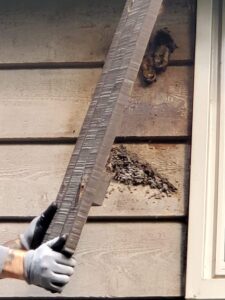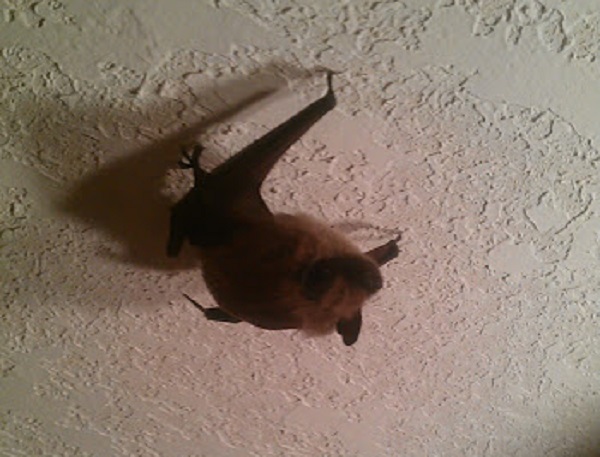A bat that finds its way into your home is typically looking for a warm, secluded dwelling. It’s important to know that bats do not enter a home intending to do harm. Like any mammal species, they want a safe place to call home to birth their pups and escape inclement weather. Unfortunately, this means a dark and closed home attic is often their favourite choice.
Sometimes, usually by accident, a bat manages to slip in through a door or window into your living space. With a little guidance and patience can be coaxed to leave the same way. Regardless of bat intentions, bats and humans seem to have a difficult relationship. If you encounter one of these flying mammals in your home, there are some good things to know about bat removal to help you achieve the best outcome for the situation.
A Bat Surprise
 When you find yourself face to face with a bat in your home, it’s usually a startling and unwelcome moment. The trick is to know what to do ahead of time. The goal is to treat the animal humanely and avoid a close contact situation. Bats are just as scared of you and are intent on finding their way out of a bad situation. When a bat starts darting around the house, it is seeking an escape route to safety.
When you find yourself face to face with a bat in your home, it’s usually a startling and unwelcome moment. The trick is to know what to do ahead of time. The goal is to treat the animal humanely and avoid a close contact situation. Bats are just as scared of you and are intent on finding their way out of a bad situation. When a bat starts darting around the house, it is seeking an escape route to safety.
This is where people start to lose their cool and may begin striking at the bat, which, as you can guess, only complicates the issue. Here are tips for controlling the situation in a calmer manner:
- Wait until the bat lands and is motionless: Bats are fast and near impossible to catch. A bat that is already panicked could attempt to bite for protection. Always let the bat land first before you do anything. If you need to contain the animal in a room until help arrives, do so without touching the bat.
- Keep yourself safe: Never put yourself at risk with any wild animal. Bats can carry disease or rabies, so do not attempt to handle the bat yourself. If you are concerned a person or pet in your home was bitten, contact your local health department immediately.
- Call a humane wildlife control specialist: This is always the best choice. If you can safely get the animal to fly away on its own, then do so. Otherwise, get specialists to remove the bat. They will make certain the bat is released in a way that ensures its survival as well as your safety and check your home for signs of a bigger issue.
Legally speaking, many species of bats are protected due to human and environmental pressures causing devastation to their populations. It is vital that bats be handled with extreme care so they can continue to play an important role in our global ecosystem.
A Bat or Two or More
Seeing a bat in your home could likely mean you have additional houseguests. Bats can enter your home through a dime-size hole. This means it is easy for them to make a home in attics, chimneys or crevices.
You may smell bats or hear them and never actually see one in your home. Bat waste, or guano, has a strong odour. If a colony of bats has taken up residence, the amount of guano present can cause a real stink. Also, the larger the colony, the more noise they make. A number of squeaking bats will eventually draw attention.
A bat specialist is trained to safely extricate a bat colony. This has to be done at specific times, so adults are not separated from their young and pups are fully able to leave the roost on their own. Specialists can take you through the entire process.
A Bat Expert to the Rescue
Contact Skedaddle Humane Wildlife Control in Durham for the professional skills you need to humanely handle your bat concerns. We specialize in wildlife removal and can protect your home against further animal intrusions.



